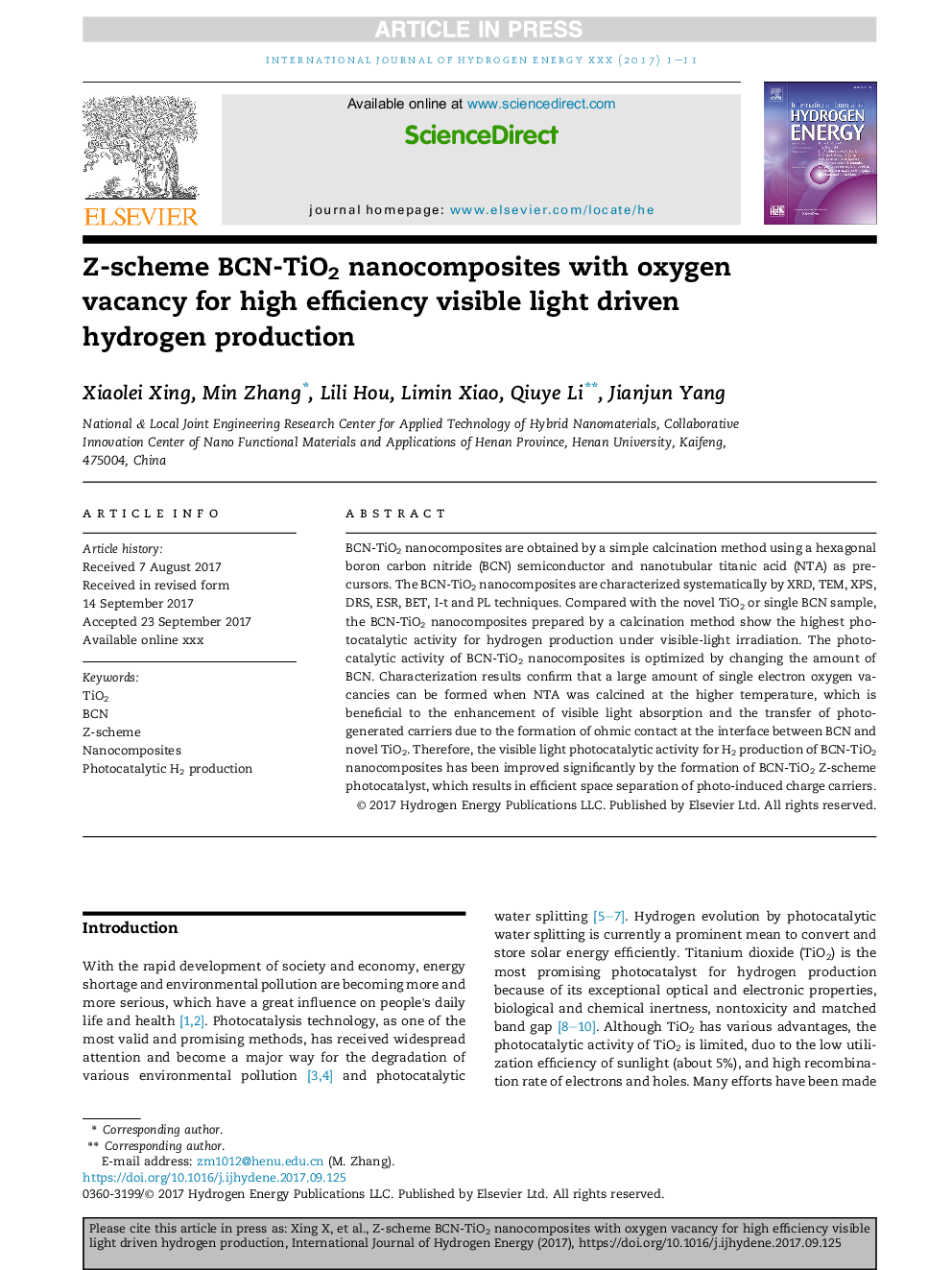| Article ID | Journal | Published Year | Pages | File Type |
|---|---|---|---|---|
| 7709488 | International Journal of Hydrogen Energy | 2017 | 11 Pages |
Abstract
BCN-TiO2 nanocomposites are obtained by a simple calcination method using a hexagonal boron carbon nitride (BCN) semiconductor and nanotubular titanic acid (NTA) as precursors. The BCN-TiO2 nanocomposites are characterized systematically by XRD, TEM, XPS, DRS, ESR, BET, I-t and PL techniques. Compared with the novel TiO2 or single BCN sample, the BCN-TiO2 nanocomposites prepared by a calcination method show the highest photocatalytic activity for hydrogen production under visible-light irradiation. The photocatalytic activity of BCN-TiO2 nanocomposites is optimized by changing the amount of BCN. Characterization results confirm that a large amount of single electron oxygen vacancies can be formed when NTA was calcined at the higher temperature, which is beneficial to the enhancement of visible light absorption and the transfer of photogenerated carriers due to the formation of ohmic contact at the interface between BCN and novel TiO2. Therefore, the visible light photocatalytic activity for H2 production of BCN-TiO2 nanocomposites has been improved significantly by the formation of BCN-TiO2 Z-scheme photocatalyst, which results in efficient space separation of photo-induced charge carriers.
Related Topics
Physical Sciences and Engineering
Chemistry
Electrochemistry
Authors
Xiaolei Xing, Min Zhang, Lili Hou, Limin Xiao, Qiuye Li, Jianjun Yang,
